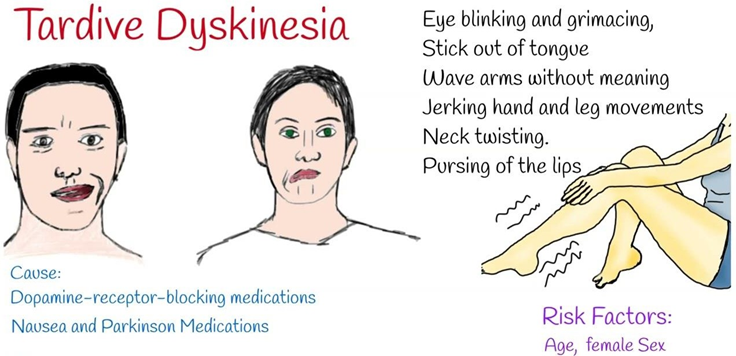A nurse is preparing to administer a vaginal cream to a client. The nurse should instruct the client to lie in which of the following positions while in bed?
Prone
Orthopneic
Sims' position
Dorsal recumbent
The Correct Answer is D
A. Prone position (lying face down) is not appropriate for administering vaginal cream.
B. Orthopneic position (sitting up and leaning slightly forward) is not conducive to administering vaginal cream.
C. Sims' position (lying on the left side with the right knee drawn up and the left arm drawn behind, often used for rectal examinations) is not typically used for administering vaginal cream.
D. The dorsal recumbent position, lying on the back with knees flexed and soles of feet flat on the bed, is typically recommended for administering vaginal cream. This position allows for easier insertion and retention of the medication.
Nursing Test Bank
Naxlex Comprehensive Predictor Exams
Related Questions
Correct Answer is A
Explanation
A. Lithium can cause hypothyroidism and goiter as adverse effects. Therefore, monitoring of thyroid function and physical examination for thyroid enlargement is necessary during lithium therapy.
B. Constipation is not a typical adverse effect of lithium carbonate. It's more commonly associated with side effects such as nausea, diarrhea, or polyuria.
C. Hyporeflexia is not commonly associated with lithium carbonate use. Lithium more commonly affects the central nervous system, leading to symptoms such as tremors, confusion, and seizures in cases of toxicity.
D. Lithium is more commonly associated with the opposite effect, lowering blood pressure rather than elevating it. It's known to have effects on sodium transport in renal tubules, leading to increased water retention and possibly hypotension.
Correct Answer is D
Explanation
A. Akathisia refers to a subjective feeling of restlessness and an objective inability to sit still.
It's characterized by a need to move constantly and is not typically associated with choreiform movements, lip smacking, or spastic facial distortions.
B. Dystonia involves sustained or intermittent muscle contractions leading to abnormal postures or twisting movements. It typically presents with muscle spasms, not choreiform movements or lip smacking.
C. Pseudoparkinsonism refers to a collection of symptoms that resemble Parkinson's disease, such as tremor, bradykinesia, rigidity, and postural instability. It does not typically involve choreiform movements or lip smacking.
D. Tardive dyskinesia is a movement disorder characterized by involuntary, repetitive movements of the face and body, including choreiform movements (rapid, jerky movements), lip smacking, and spastic facial distortions. It often develops after long-term use of antipsychotic medications like chlorpromazine and can persist even after discontinuation of the medication.

Whether you are a student looking to ace your exams or a practicing nurse seeking to enhance your expertise , our nursing education contents will empower you with the confidence and competence to make a difference in the lives of patients and become a respected leader in the healthcare field.
Visit Naxlex, invest in your future and unlock endless possibilities with our unparalleled nursing education contents today
Report Wrong Answer on the Current Question
Do you disagree with the answer? If yes, what is your expected answer? Explain.
Kindly be descriptive with the issue you are facing.
